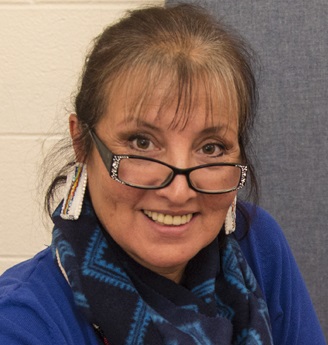National VOAD Conference a Chance to Talk, Plan Before a Disaster Hits
At the end of October, I had the pleasure to attend the National Voluntary Organizations Active in Disasters (National VOAD) annual members meeting. I was surrounded by more than 100 leaders in disaster response, including from the Salvation Army, Church World Service, the American Red Cross, NECHAMA and others. While part of the meeting was […]
At the end of October, I had the pleasure to attend the National Voluntary Organizations Active in Disasters (National VOAD) annual members meeting. I was surrounded by more than 100 leaders in disaster response, including from the Salvation Army, Church World Service, the American Red Cross, NECHAMA and others. While part of the meeting was focused on rebuilding the organization as its role and scope change after Hurricane Sandy, the second day was where the rubber hit the road, where preparedness got real, and where my ears and mind perked up considerably.
On the second morning of the annual meeting, I will admit to being that person in the audience doing their best to catch up on email while simultaneously listening attentively to the current presentation. Within moments however, my attention was quickly and wholly drawn to Mark Tinsman, from FEMA’s Mass Care and Emergency Assistance Branch. His presentation was on the:
Cascadia Subduction Zone
Catastrophic Earthquake and Tsunami
Scenario, Analysis, & impacts Briefing
The title alone would stop anyone of us in our tracks, right? Let me dive into some of the specifics revealed by Mr. Tinsman.
The Canadian Subduction Zone (CSZ) is part of the Pacific Ring of Fire, and located just off the coast of the Pacific Northwest, running from Vancouver south of Portland. I learned in this presentation that subduction zones produce some of the world’s largest earthquakes, including the earthquake that resulted in the South Asian Tsunami on December 26, 2004.
FEMA and other United States governmental bodies have developed a scenario to understand the implications of a quake along the CSZ. The scenario includes input from Washington State Department of Natural Resources, the Critical Infrastructure Workshop, the United States Geological Survey, and others.
The scenario describes a 9.0 earthquake that causes direct impact to three states, with a complete rupture of the 800-mile fault line. The scenario includes ground shaking for up to five minutes with sizeable aftershocks. Projected fatalities from the earthquake would reach 1,100, with upwards of 24,000 injuries. There is zero ground access to the impacted area.
And then comes the tsunami.
With just 15 to 30 minutes notice a tsunami with 20- to 80-foot wave height causes 13,00 deaths and destroys all coastal ports and airports along 453 miles of coastline. There will be no ground access from to the coast from the I-5 corridor.
Here is a sampling of frightening assumptions made by Mr. Tinsman that are part of this scenario:
- Local, State and Federal Regional capabilities and resources will be overwhelmed by the magnitude of the incident.
- Aftershocks will cause a significant amount of additional damage during the response.
- Response resources in the impacted area will have limited capability to function and some impacted areas will be isolated.
- Resources outside of the impacted will have extended response times due to significant impact to transportation infrastructure.
- Severe winter weather including rain, snow, fog will hamper response operations.
- There will be significant damages to all aspects of transport – road, bridge, rail, airports, ports, waterways, and ferry systems.
In short, the devastation is of epic proportions and current capacity to respond to the disaster just is not enough.
There is a silver lining to this doom and gloom. Federal and state governmental actors, infrastructure organizations (hospitals, airports, schools), responding organizations, and individuals are actively working to build the unmet capacity and prepare for the disaster. They are hosting workshops, running simulations, conducting mapping exercises, and reviewing readiness plans.
In all of this preparation, open communication is important, as is building key relationships ahead of time. Effective recovery from a disaster rests in how well state and local responders are tied into each other ahead of time, which is what makes organizations like the National VOAD so important.
As always, I would love to hear from you! If you attended the National VOAD conference, what was your biggest takeaway? Email me at regine.webster@disasterphilanthropy.org.
More like this

